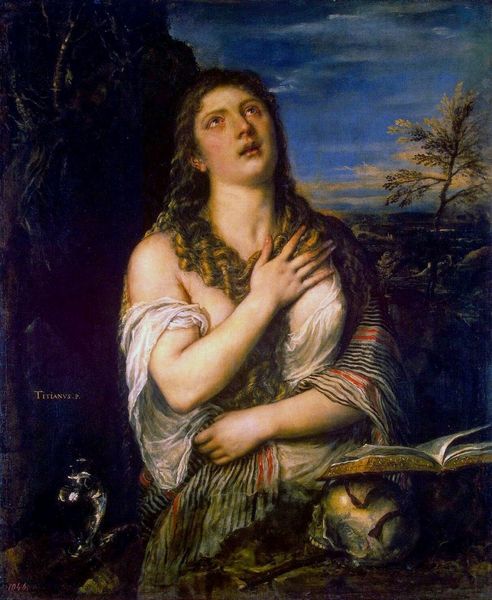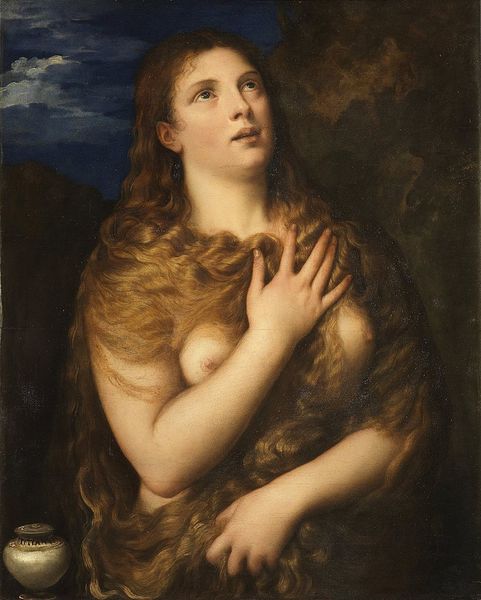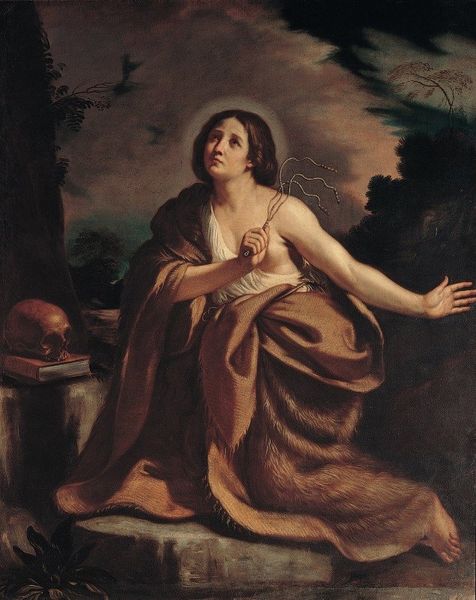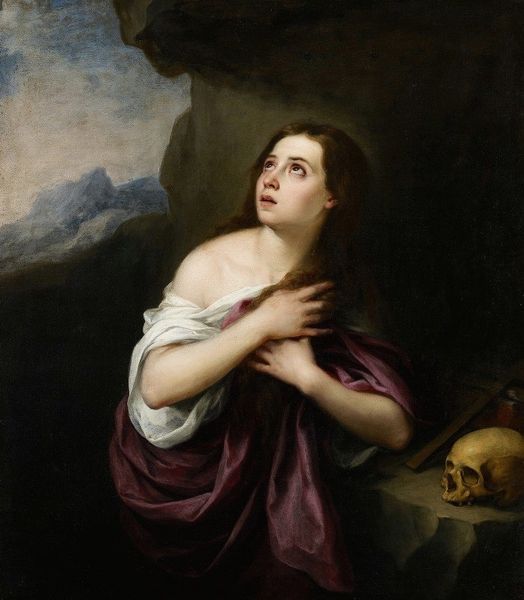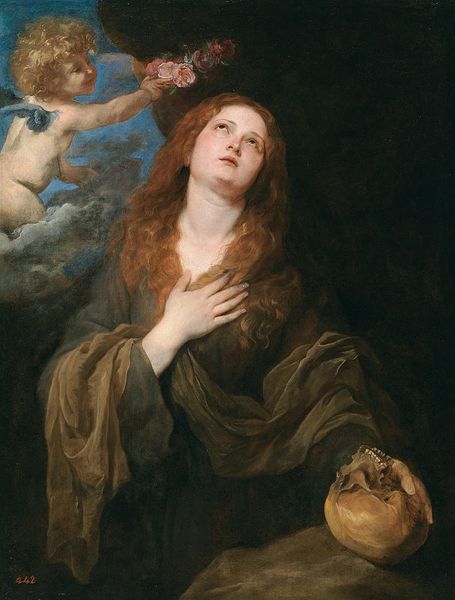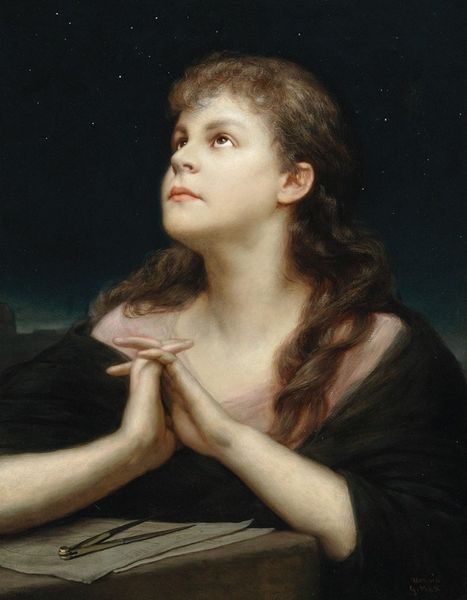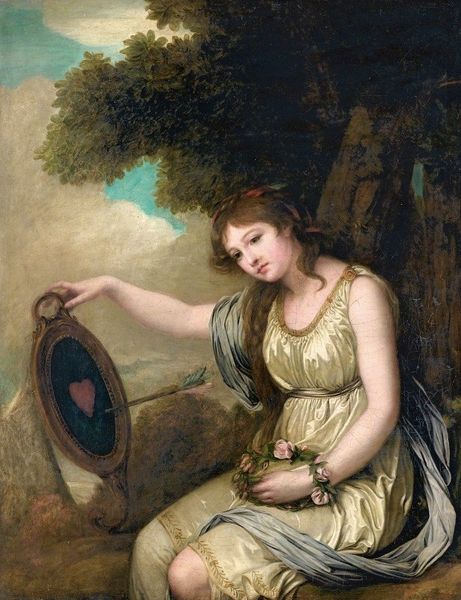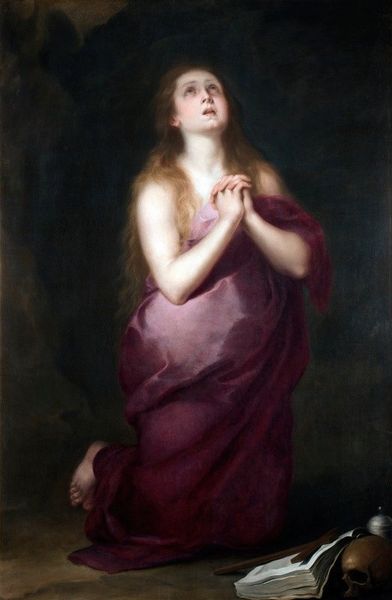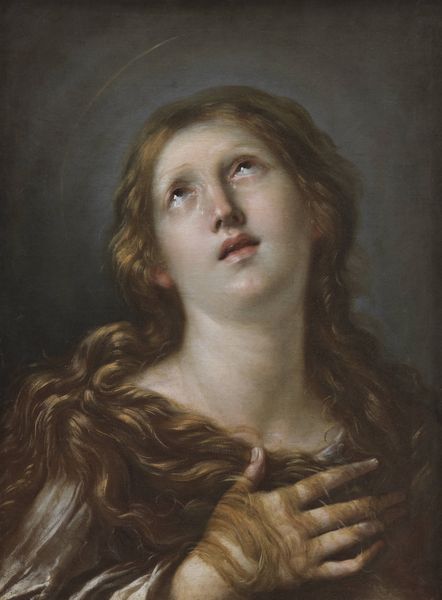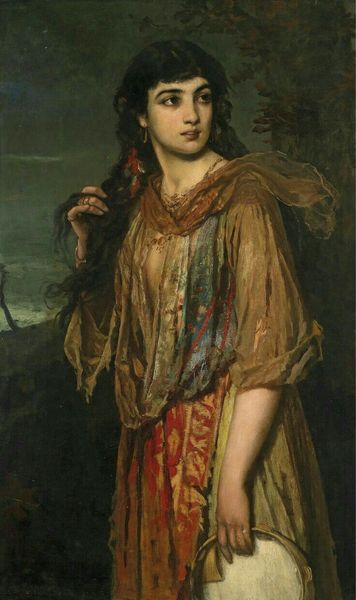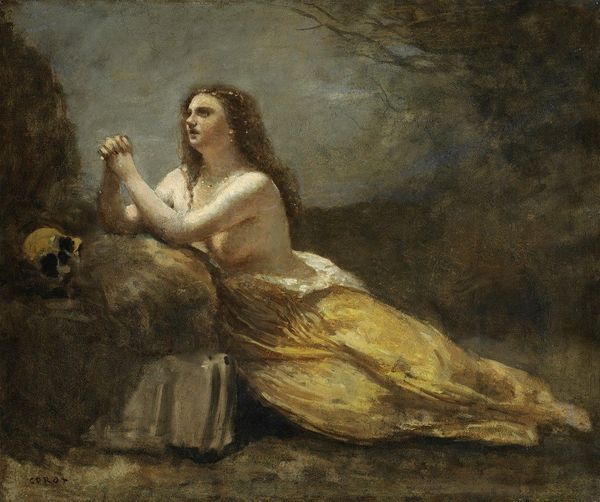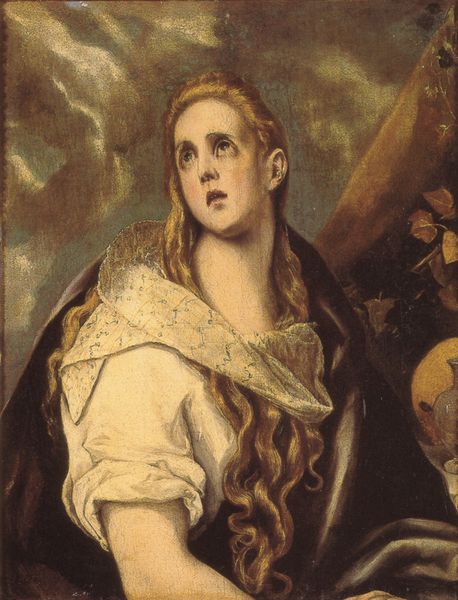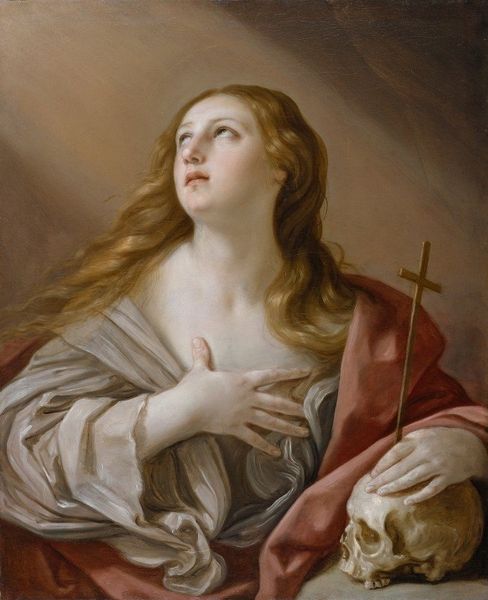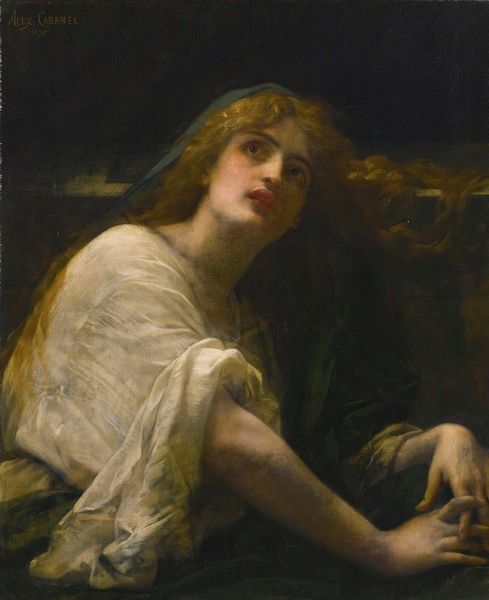
Copyright: Public Domain: Artvee
Editor: So here we have Titian's "The Penitent Magdalene," created sometime between 1555 and 1565 using oil paint. It’s quite moving, with her tearful gaze directed upwards. What catches your eye about this work? Curator: Beyond the obvious emotional intensity, I see a careful negotiation of established imagery and social expectations. Think about the Magdalene: often depicted as either a seductive figure or a remorseful sinner. How does Titian navigate these competing narratives within the social context of 16th-century Venice? Editor: That's interesting. I hadn't really considered the conflicting narratives surrounding her. Curator: Note how the overt sensuality, flowing hair, and partially exposed body, is carefully juxtaposed with her devotional gesture and the surrounding wilderness. It plays into, and also slightly subverts, the male gaze so prominent in the art of the period. How does Titian use this visual language to both titillate and promote piety? Editor: So it’s almost like he’s acknowledging those prevailing views while also trying to offer a more complex, perhaps even sympathetic, portrayal of her inner struggle. Do you think the painting's popularity played a role in shaping public perception of Mary Magdalene? Curator: Absolutely. This image became incredibly influential, reproduced and reinterpreted countless times. Think about the role of art in shaping religious and cultural beliefs. Artworks like this didn't just reflect existing beliefs, they actively shaped them. Editor: That's fascinating; I'll definitely consider Titian's choices within that broader cultural and religious landscape now. Thank you! Curator: A useful perspective, isn't it? Looking beyond the surface beauty allows for a much richer engagement with art.
Comments
No comments
Be the first to comment and join the conversation on the ultimate creative platform.
